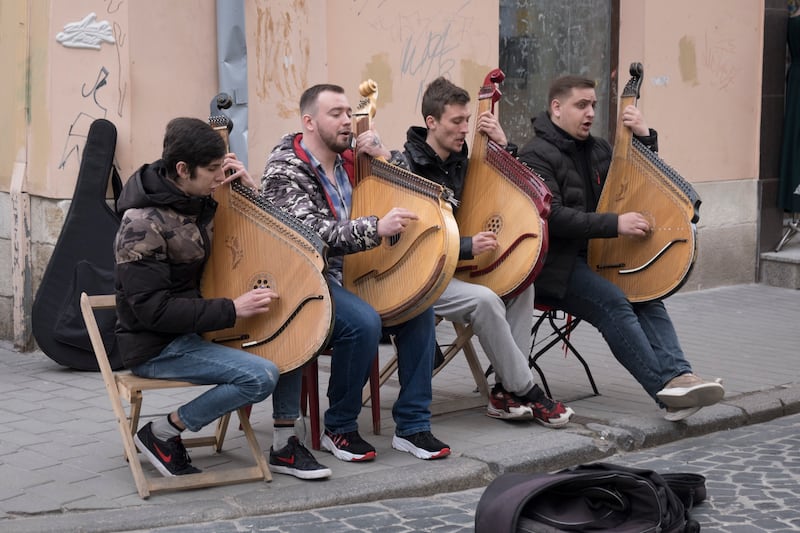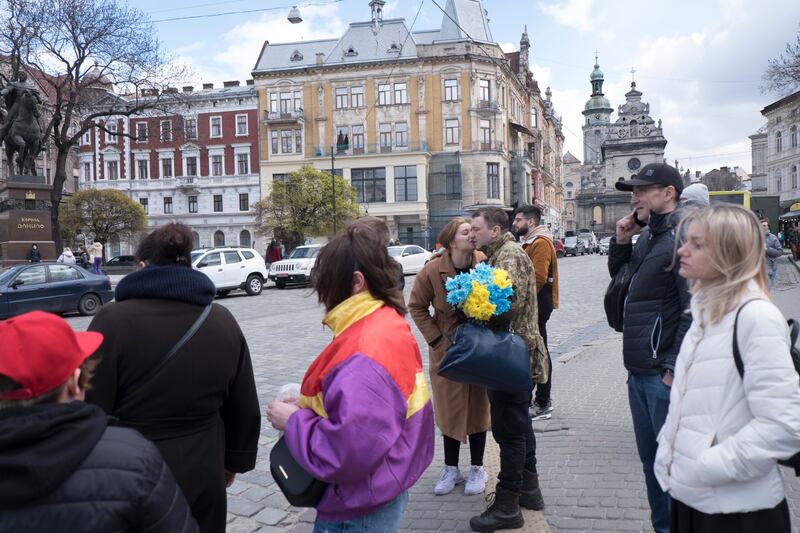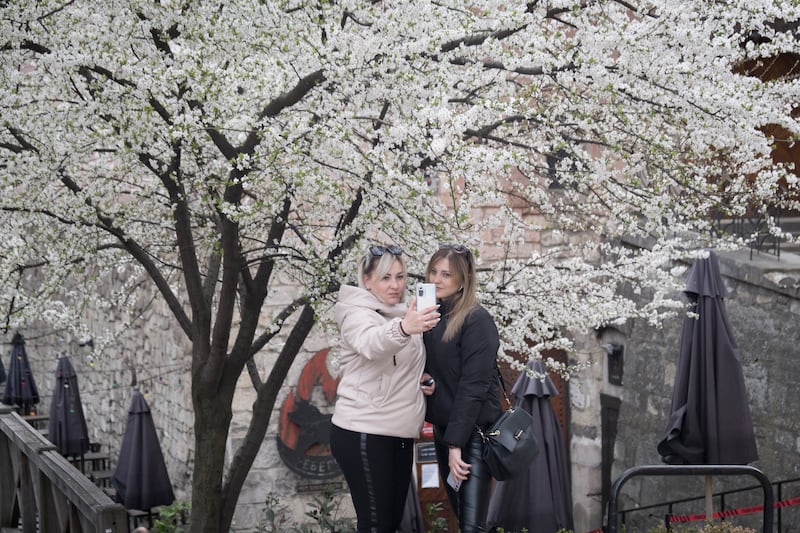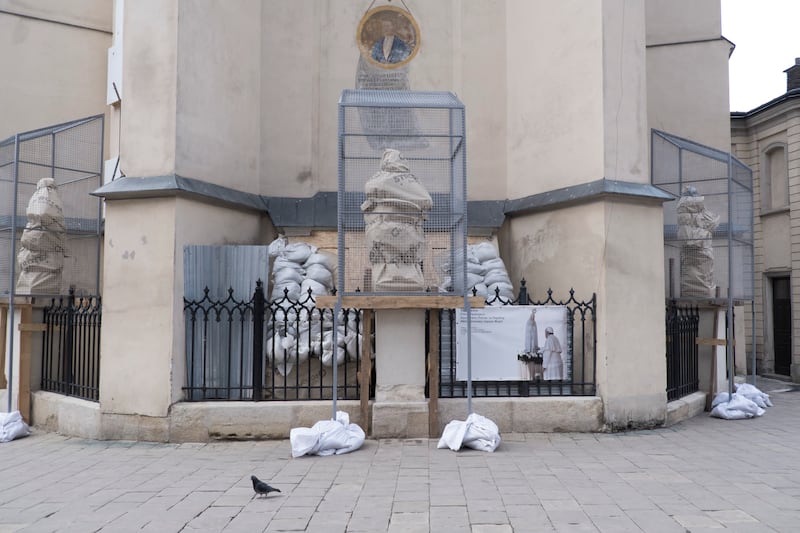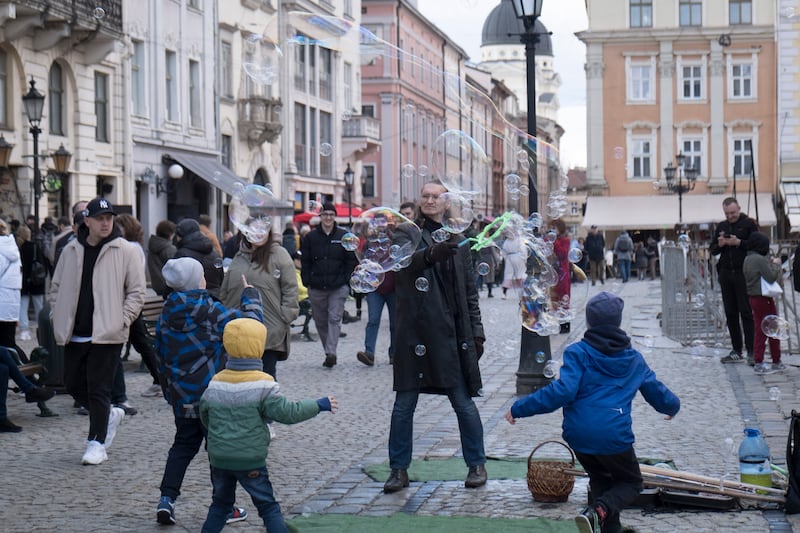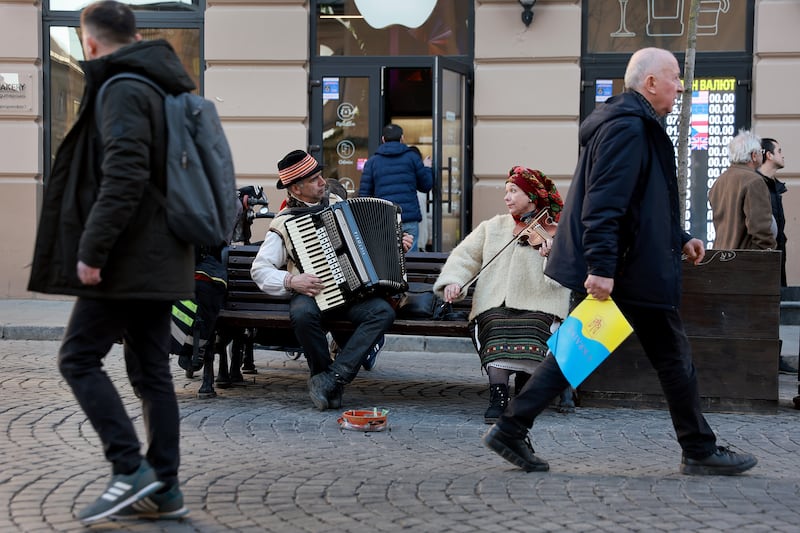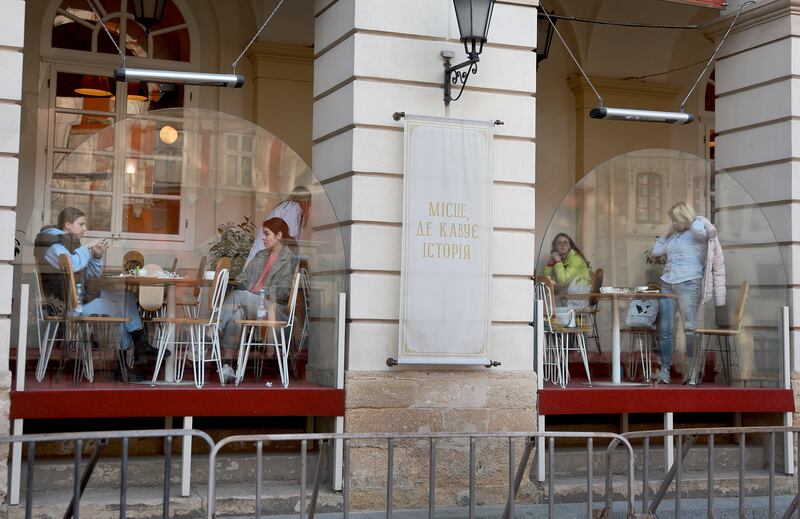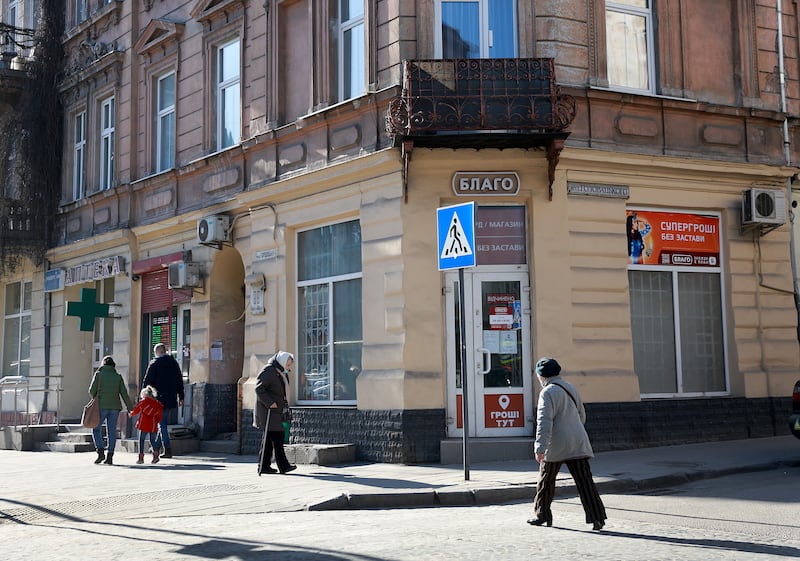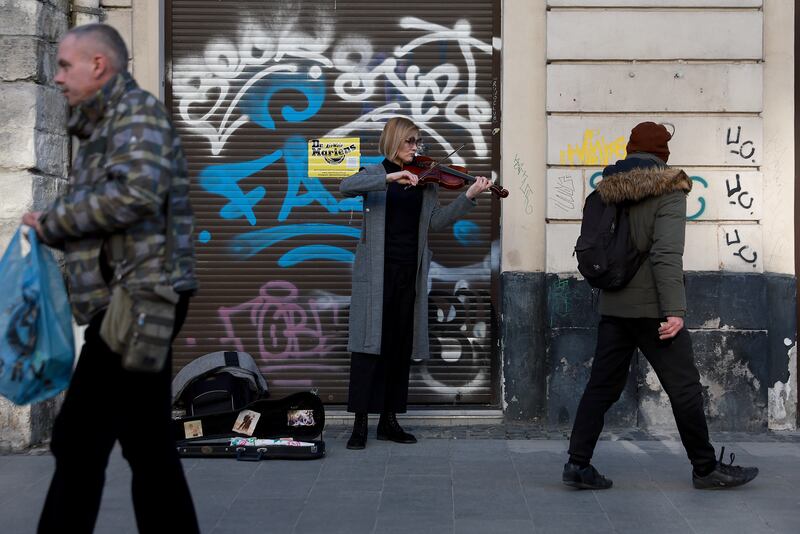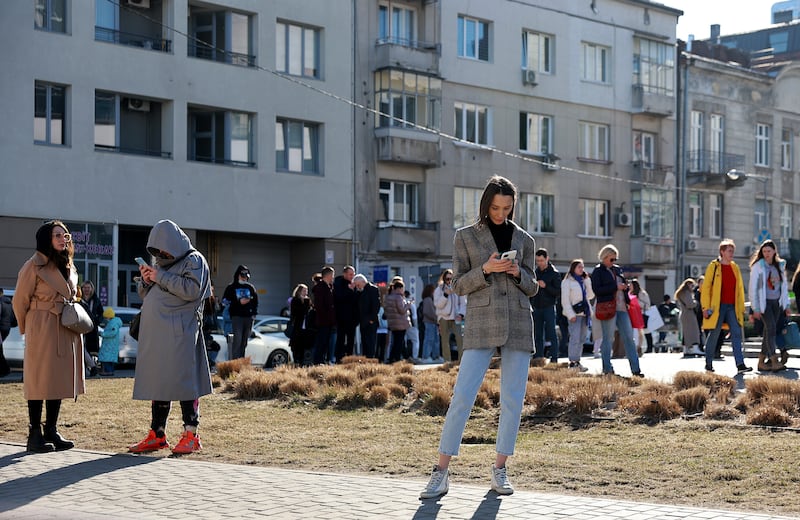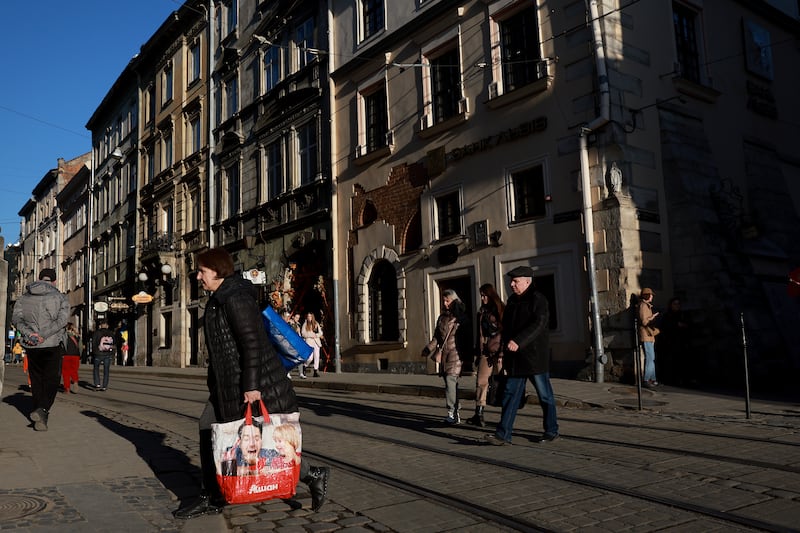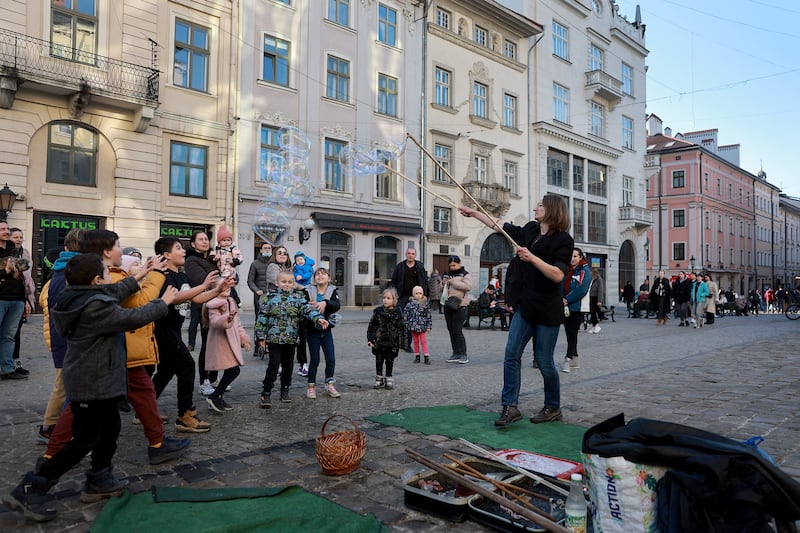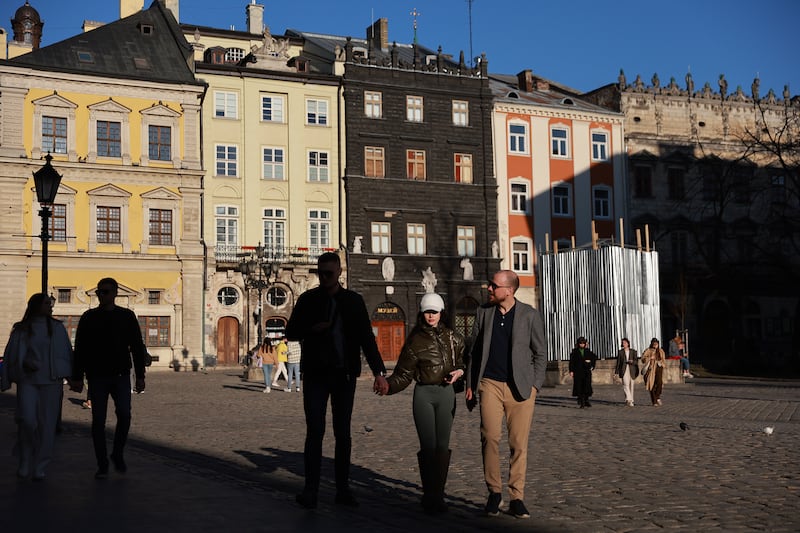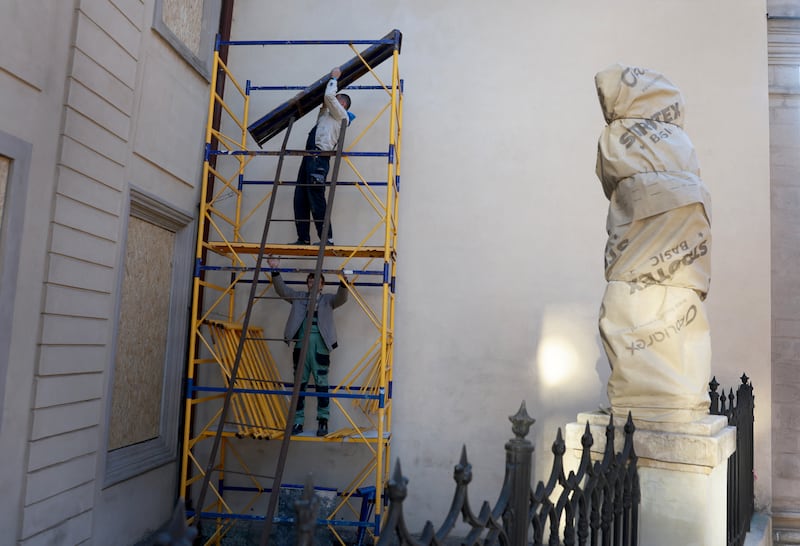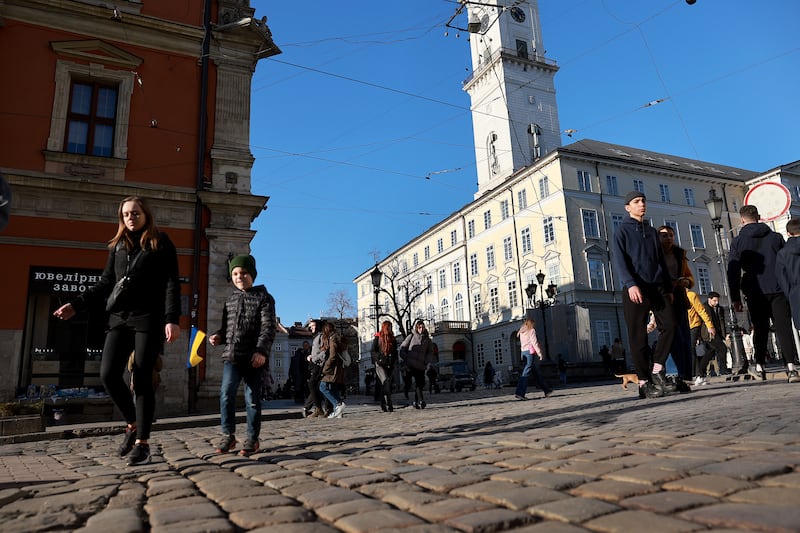With the train from Poland delayed, I arrive in the Ukrainian city of Lviv well after curfew to find the city deserted. A stray dog ― perhaps a forgotten pet ― is the only sign of life I meet as I hurry through the eerily empty streets to my hotel. That night as I try to sleep, the city is so quiet I could be in a village deep in the countryside somewhere.
This being a city in a country at war, I have no illusions about what I might find. Even so, it makes for an unsettling return to a place I have come to know well in recent years.
This is now my fourth visit to Lviv. My first was in February 2015. On that occasion I had arrived in the city after travelling in the Donbas, during a ceasefire between Kyiv and Russia-backed separatists. With its trams and cobbled streets, Lviv felt a world away from the industrial, war-torn east.
There was a feeling of discovery in being here, and with it a sense of pride. I could boast to others about this gem of a city, so often overlooked by foreign tourists, as true then as it was before hostilities first began. Architecturally, it was the equal of Budapest, I thought. It was like Krakow, only without the tourist hordes and British stag parties.
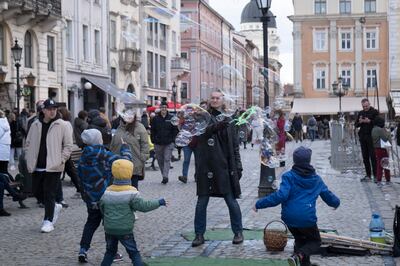
As the former capital of the Austro-Hungarian province of Galicia, the city offers no end of architectural delights, encompassing a range of styles: Renaissance, Baroque, classicism, historicism, Art Nouveau and Art Deco. Having survived the Second World War intact, and having weathered the years of Soviet neglect that followed, you could walk for hours here, surrounded by history, imagining yourself back in the twilight of the Habsburg age.
The Austrian influence is evident in the inexhaustible number of cafes, offering countless blends of coffee along with cherry or apple strudel. You can picture intellectuals and writers of the day hunkering down under the vaulted ceilings. Joseph Roth ― chronicler of Austro-Hungarian decline ― was born near the city. The great Polish-British novelist Joseph Conrad ― born farther east ― spent part of his youth at a boarding house here.
But perhaps the writer best associated with the city is Leopold von Sacher-Masoch. An Austrian nobleman, it is from Masoch we get the term “masochism” on account of his 1870 novella Venus in Furs (there’s even a tourist-friendly bar in the old town bearing his name).
On my first trip, I especially loved the vibrant Rynok ― the main square ― flanked by pastel-coloured, Italianate buildings, where young people would congregate at weekends. But for all the history on display, I was taken by the city’s youthful spirit. Lviv is often cited as the heart of Ukrainian identity and the young people I met here typified their country’s desire for a more prosperous Ukraine.
I returned to Lviv on two subsequent visits. On my second, in January 2017, I rented an apartment in a turn-of-the-century tenement building. The lock on the front door didn’t always co-operate and I would heat the apartment each morning using the antique ceramic stove.
My last visit was in early 2020, during a rail trip in central Europe. It was one of the last places I visited before the Covid-19 pandemic and lockdowns put an end to all our travels.
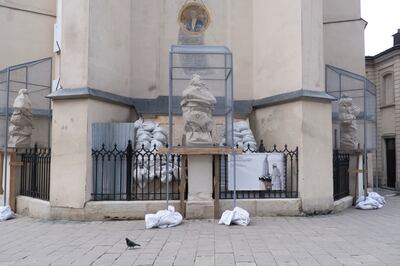
Returning now, in the wake of Russia’s invasion of Ukraine, I fear for the worst, having seen images of funeral processions and empty supermarket shelves. Nowadays the city functions as both a safe haven and transit point for refugees. An estimated 200,000 Ukrainians have fled here and a great many more have passed through on their way to Poland and beyond.
The Art Nouveau train station is busy as my train pulls in, with people waiting to catch the overnight, or with those who have made the station a temporary refuge. As I move hotels the next day, I see people gathered outside a church singing hymns. But what I take to be another funeral is in fact a celebratory service, as I arrive on Easter Sunday.
In fact, I’ve never seen the city as lively. The cafes are not only open but full. Couples and families fill the main square. Women and girls carry daffodils or pose for photos under cherry blossoms. The booksellers in the market behind the Dominican Cathedral are out plying their trade. This isn’t the uncertain, fearful city I expected.
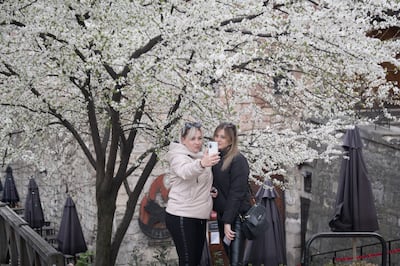
The signs of war are still there: the air raid sirens being the obvious one, but also the fortified monuments and the boarded-up windows of the churches. For the most part, however, the war appears far away. Even when several missiles hit the city the next day ― killing seven ― the people of Lviv appear unfazed; life goes on.
Maybe it’s only a veneer of calm, or maybe, with Moscow having failed in its attempt to capture Kyiv, there’s a sense of reprieve ― a chance to breathe.
One hopes the air of resilience augurs a positive end to the war, however long it may last. And I look forward to seeing the city again when the country is at peace.
